
Delosperma sphalmanthoides Photo by: Valentino Vallicelli
(A.k.a. Tufted Ice Plant Dwarf Sea Anemone) It is an excellent rock garden plant, a real cutie that blooms in early spring with incredibly profuse display of jewel-like magenta flowers. It grows only 1-2 cm high by 15-20cm wide, as its so small but also it will take quite severe frost and can be grown as an alpine. Simply irresistible.
Origin and Habitat: South Africa (Komsberg Mtns of the Cape Province)
Habitat: It is a high altitude alpine cushion plant from the mountains of the Winter rainfall area of South Africa and cold hardy. It is found in pockets of gravely soil on a massive high altitude rock outcropping. II needs moisture all year round but definitely goes semi-dormant in summer.
Synonyms:
Common Names include:
ENGLISH: Tufted Ice Plant, Dwarf Sea Anemone
Description: Delosperma sphalmanthoidesSN|11207]]SN|11207]] is a small compact cold-hardy ice-plant (the smallest species in the genus). This is truly a gem of the plant world, with minuscule, blue-green, fingerlike leaves held upward in a small cushion that may grow to 2,5 in height and 20-30 cm in diameter. The crowded cylindrical leaves are covered in spring by purple flowers.
Habit: It is a perennial succulent which makes a tight mat resembling a small blue-green sea anemone that has anchored itself in the ground.
Leaves: Tiny finger-like, plump, blue-gray.
Flowers: Spidery fuchsia-colored.
Blooming season: Flowers in very early spring. The flower buds become visible in December and excessive dryness after this point leads to poor flower development.
Bibliography: Major references and further lectures
1) Leo J. Chance "Cacti and Succulents for Cold Climates: 274 Outstanding Species for Challenging Conditions" Timber Press, 19/giu/2012
2) Gwen Moore Kelaidis “Hardy Succulents: Tough Plants for Every Climate” Storey Publishing, 01/mar/2012
3) Heidrun E. K. Hartmann “Illustrated Handbook of Succulent Plants: Aizoaceae A-E” Springer, 2002
4) Stuart Max Walters “The European Garden Flora: Dicotyledons (Part I)” Cambridge University Press, 1989
5) Smith, G. F.; Chesselet, P.; Van Jaarsveld, E. J.; Hartmann, H.; Hammer, S.; Van Wyk, B.-E.; Burgoyne, P.; Klak, C.; & Kurzweil, H. “Mesembs of the world.” Briza Publications, Pretoria. 1998
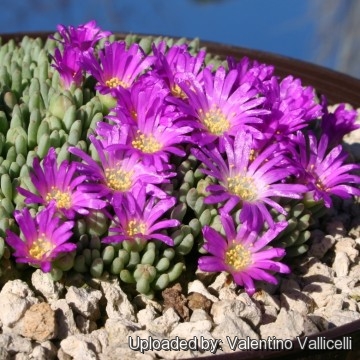 Delosperma sphalmanthoides Photo by: Valentino Vallicelli
Delosperma sphalmanthoides Photo by: Valentino Vallicelli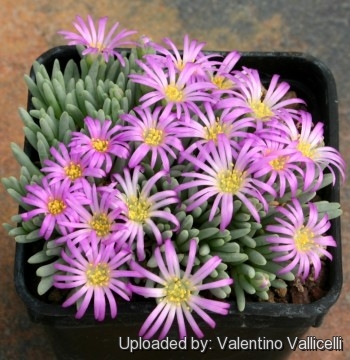 Delosperma sphalmanthoides Photo by: Valentino Vallicelli
Delosperma sphalmanthoides Photo by: Valentino Vallicelli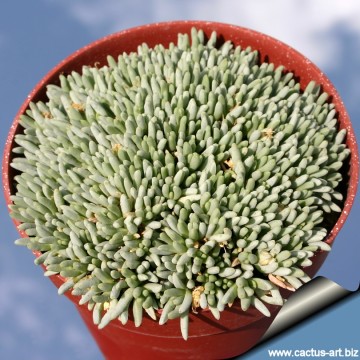 Delosperma sphalmanthoides Photo by: Cactus Art
Delosperma sphalmanthoides Photo by: Cactus Art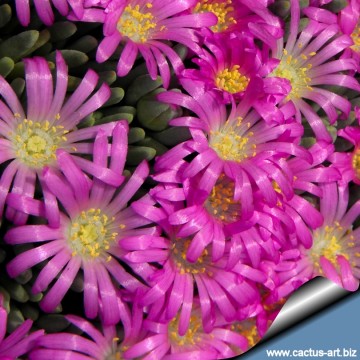 Delosperma sphalmanthoides Photo by: Cactus Art
Delosperma sphalmanthoides Photo by: Cactus Art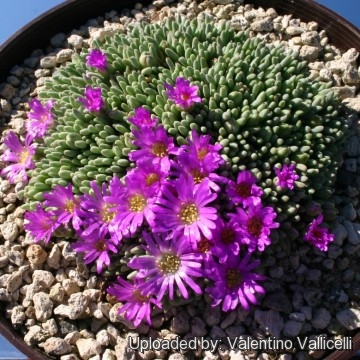 Delosperma sphalmanthoides Photo by: Valentino Vallicelli
Delosperma sphalmanthoides Photo by: Valentino Vallicelli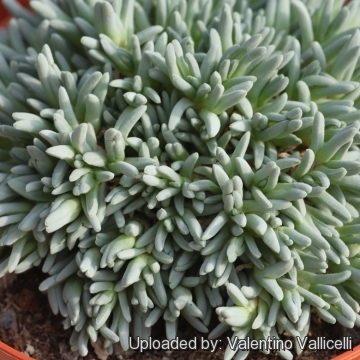 Delosperma sphalmanthoides Photo by: Valentino Vallicelli
Delosperma sphalmanthoides Photo by: Valentino Vallicelli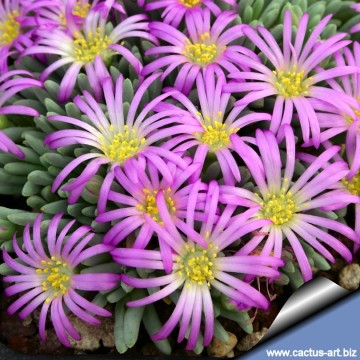 Delosperma sphalmanthoides Photo by: Cactus Art
Delosperma sphalmanthoides Photo by: Cactus Art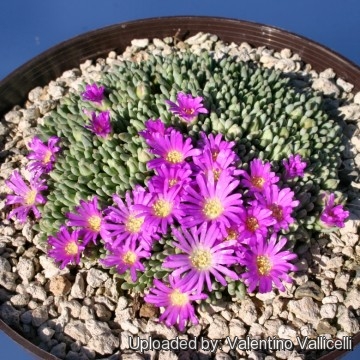 Delosperma sphalmanthoides Photo by: Valentino Vallicelli
Delosperma sphalmanthoides Photo by: Valentino VallicelliCultivation and Propagation: Delosperma is a genus that require very little maintenance. Delosperma sphalmanthoidesSN|11207]]SN|11207]] seems to do best in rocks crevices, where it has a cool root run. In fact, growing with rocks slows the heating and cooling of the soil and provides sharp drainage and additional water at the same time. However, it is a good container plant too.
Watering: Although they are succulent they need plenty of water. Treating them like other succulents with limited watering will cause their untimely death.
Hardiness: This species can withstand severe frost (hardiness to -18° C or even less) and can be planted out of doors in northern hemisphere rock-gardens (USDA zone 4 to 8).
Exposure: They seems to enjoy a hot, full sun position in the rockery, where winter snows melt quickly.
Fertilization: Fertilizing this plant really isn't needed as it's already a voracious grower. However, a liquid 10-10-10 diluted to half strength or a cactus fertilizer once a month during spring and summer can benefit the plant.
Repotting: Make sure to repot during its more active period, starting in spring.
Soil: They need well drained soil with less organic material; extra pumice or perlite provides excellent drainage essential to these type of plants.
Pot culture: Plants in pots prefer light afternoon shade in hottest summer days while during the winter they can be watered less often, about every 2-3 weeks. Inside they grow fine on windowsills, and will even bloom, if they get enough direct sunlight.
Propagation: Offsets that form at the base are the easiest way to propagate it, cuttings root readily and can form a groundcover within a short period, but seeds are also an options. Seeds germinate in 7-14 days at 21°C. If they start to rot there is usually part of the plant that can be removed and possibly rooted.
Your Photos
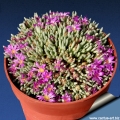
by Cactus Art



















